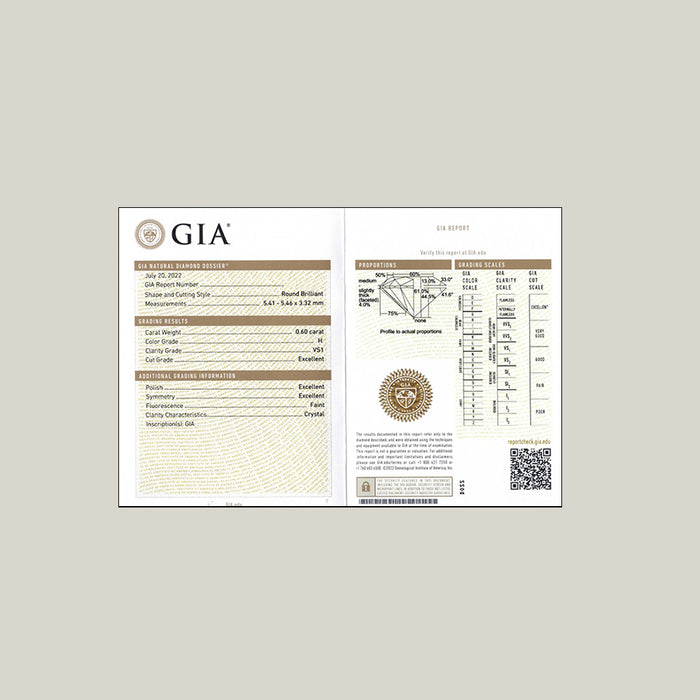
Decoding Diamonds: Understanding Your GIA Diamond Report
ReadWith each of our natural diamonds you’ll receive a GIA report or dossier. Tucked in a clear plastic sleeve, this fold-out booklet contains (almost) everything you’ll need to know about your diamond.
But how do you read it, and what else will you need to know before making your choice? Our guide covers this and more.
WHAT IS A GIA REPORT?
This is the documentation that accompanies a diamond whose quality has been meticulously determined by GIA. The process of visually assessing a diamond against a set of standards is known as grading, and there are 3 or 4 general categories that a diamond is graded on depending on the cut of diamond.
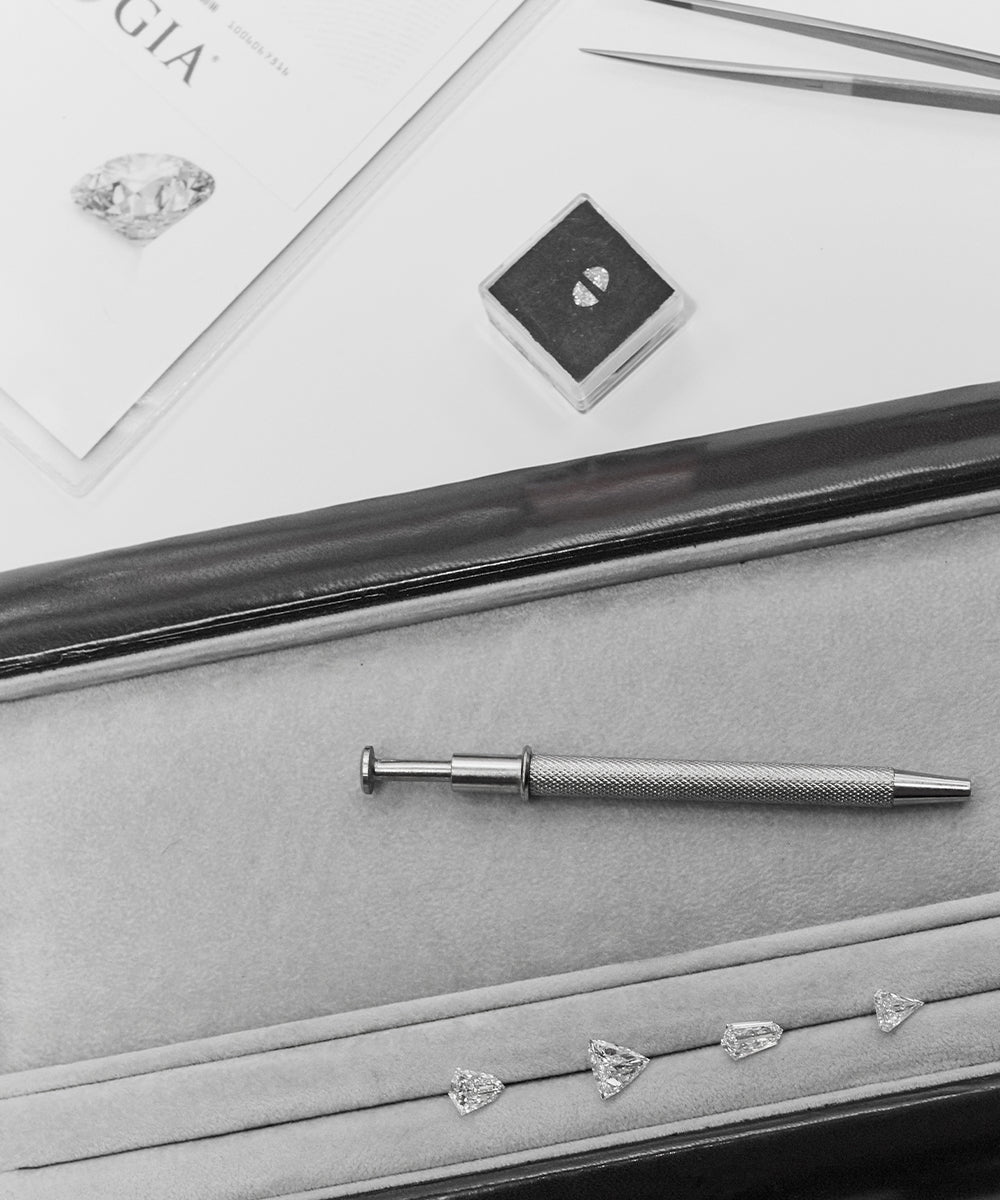
TERMINOLOGY
A full report will be issued for diamonds over 1ct and includes a plotted diagram of the diamond’s clarity characteristics. A reduced dossier accompanies diamonds under 1ct, and although it does not feature this plot it still retains the same value as a full report.
It’s worth noting that although ‘GIA certificate’ is not a term used by GIA itself, it means the same as a grading report.
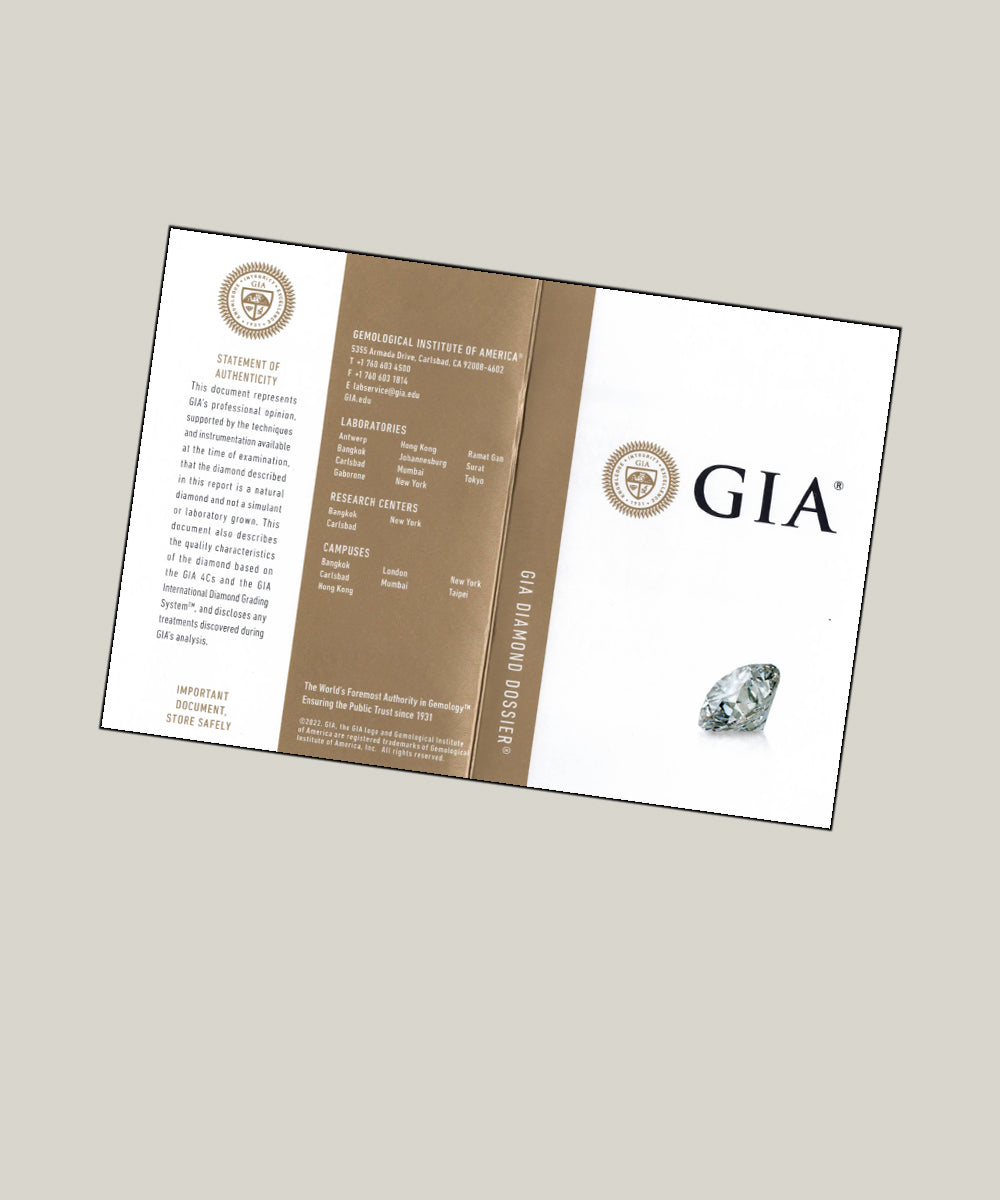
WHO ARE GIA?
GIA stands for the Gemological Institute of America, and they’re an ‘independent, nonprofit organisation that conducts gem research, educates gem professionals and sets the standards for determining diamond quality’.
GIA was the first to create a universalised grading system for the 4C’s in 1953, which has since become the industry standard.
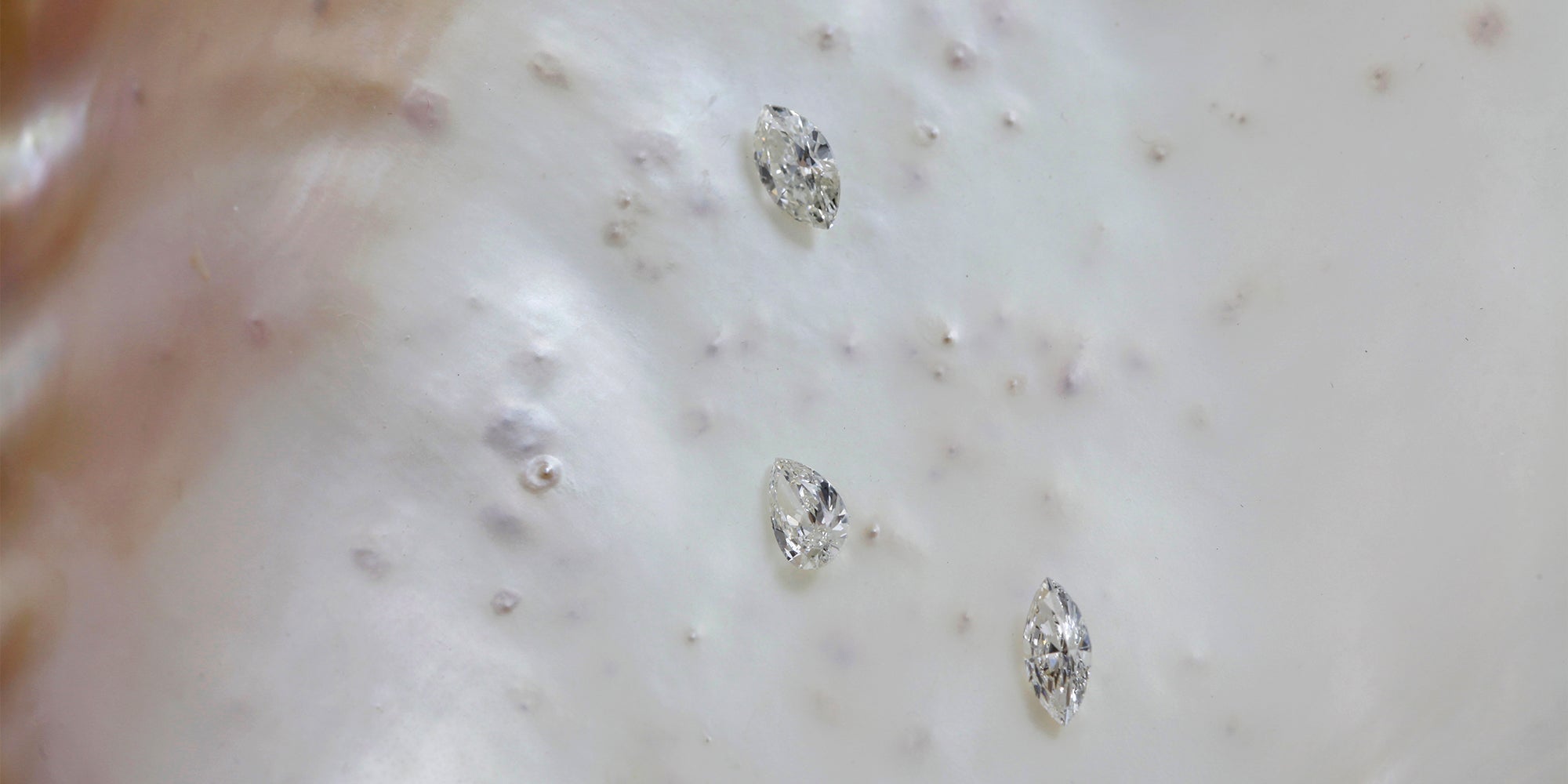
HOW ARE DIAMONDS GRADED?
Under controlled laboratory conditions, a highly skilled diamond grader will assess the diamond by eye. Round brilliant cut diamonds that fall between the D-Z colour range are graded on the 4Cs - Carat, Colour, Clarity and Cut. Note that any modern cut other than a round will only be assessed on the first 3 Cs.
WHY CHOOSE GIA?
There are several options for globally recognised independent grading laboratories, but GIA is widely respected and considered to be the gold standard for natural diamonds.
Having created the first grading system, GIA set the high standards that all subsequent laboratories have modelled their grading on but, naturally, these could not be replicated with 100% accuracy. As such there are small discrepancies between the laboratories and the diamonds they grade cannot be compared like-for-like.
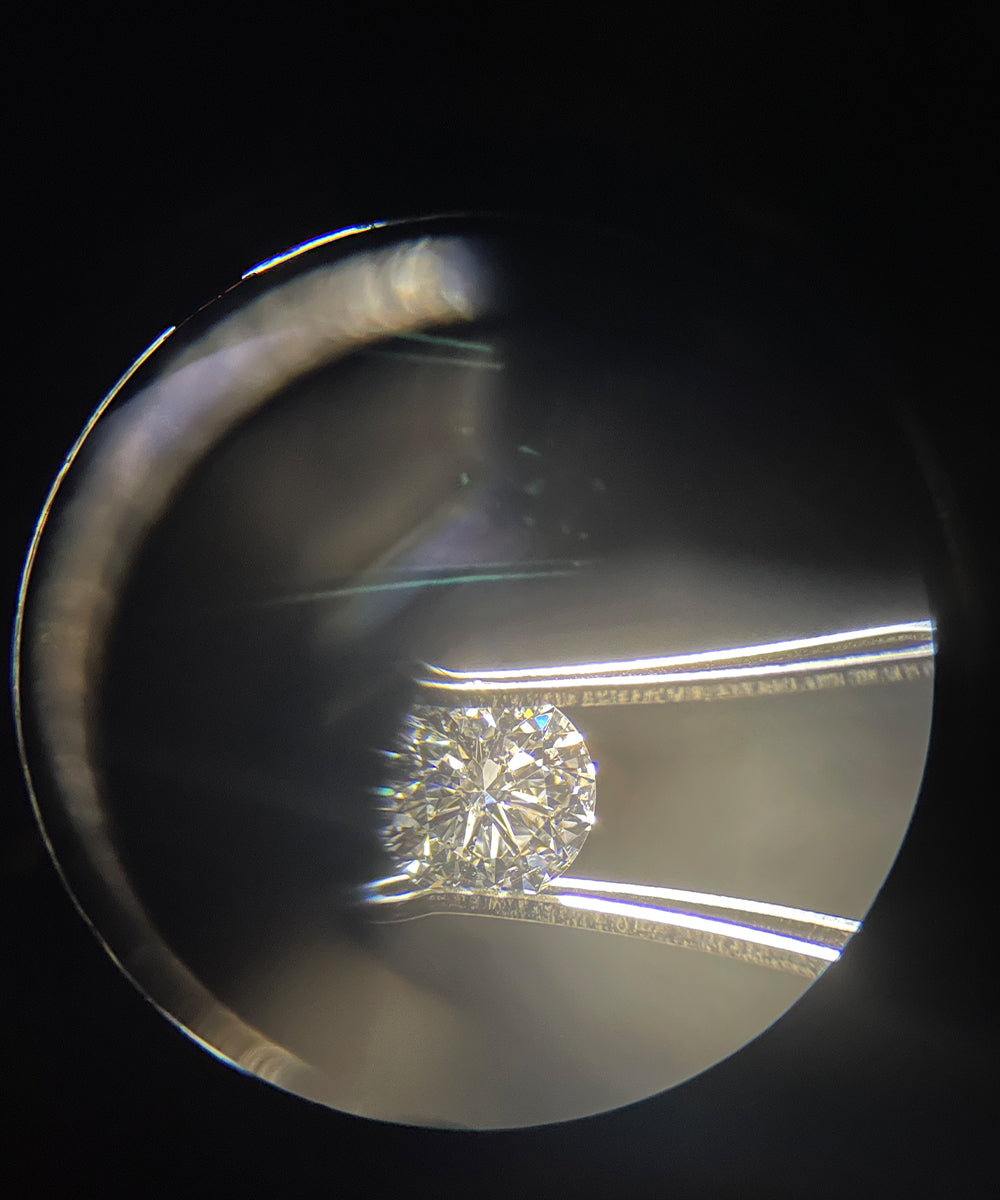
DOES THE DIAMOND REPORT MATTER?
Yes! Minute differences in diamond grades have a significant impact on the price of a natural diamond, and a diamond assessed by the most stringent grading body minimises the risk of overpaying for it. This is why we always recommend GIA for certifying natural diamonds.
Keeping the report safe is essential as they are difficult and expensive to reproduce.
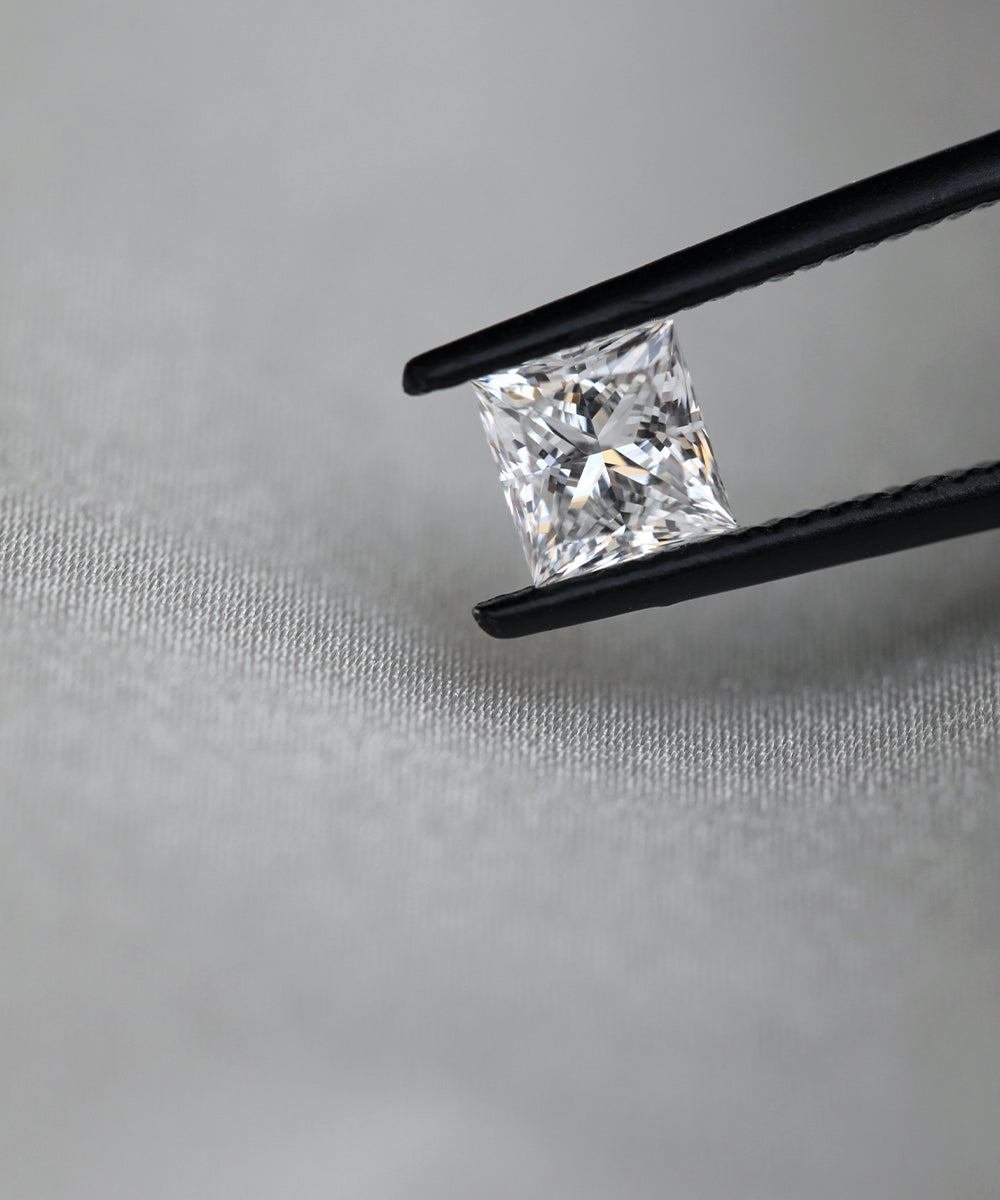
HOW DO I READ A GIA REPORT
Inside a full GIA report you'll find the following:
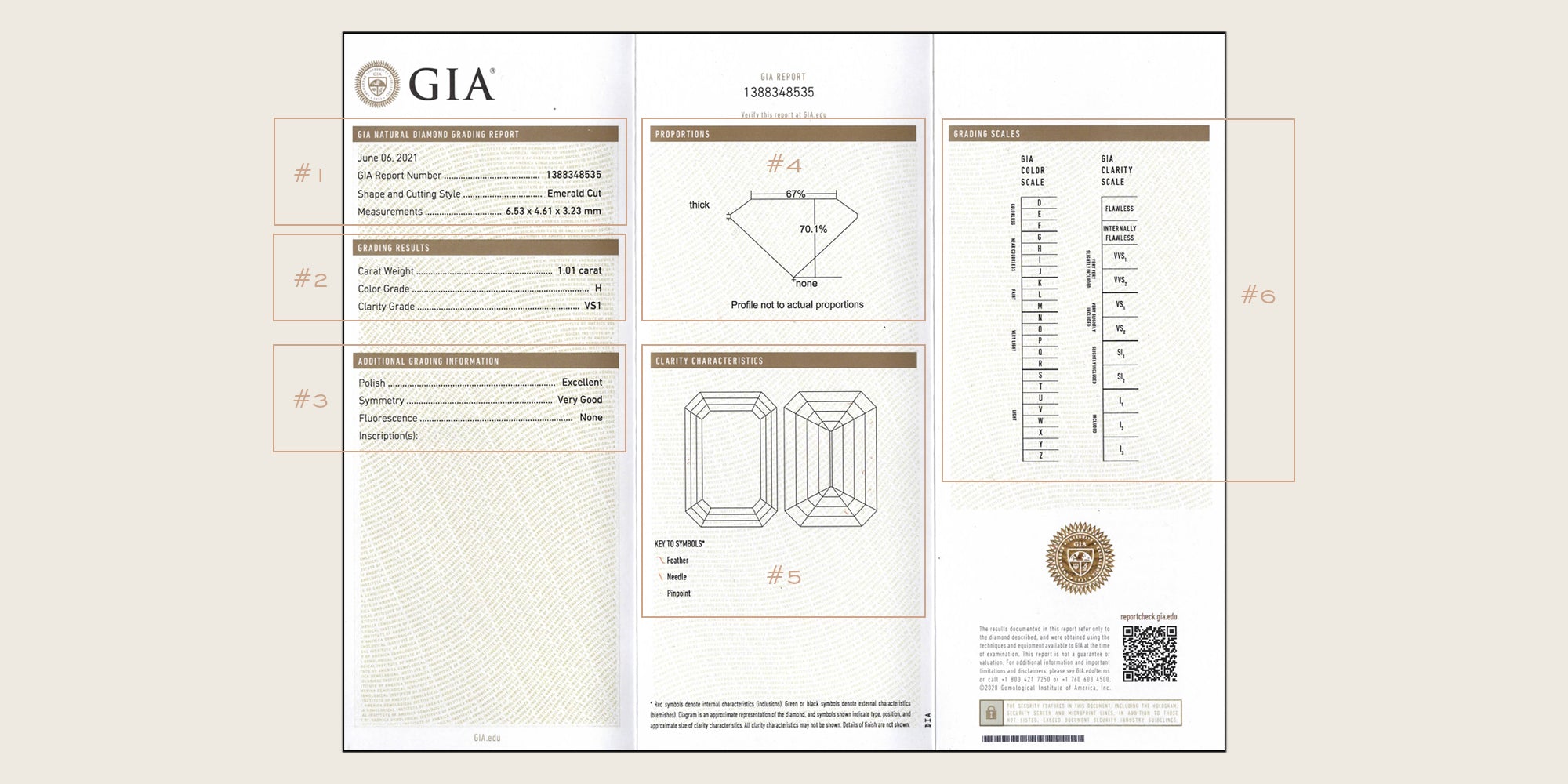
SECTION #1: OVERVIEW
This breaks down the date the report was conducted, the report number, diamond shape and cutting style and its dimensions, all of which relate the physical diamond to the report.
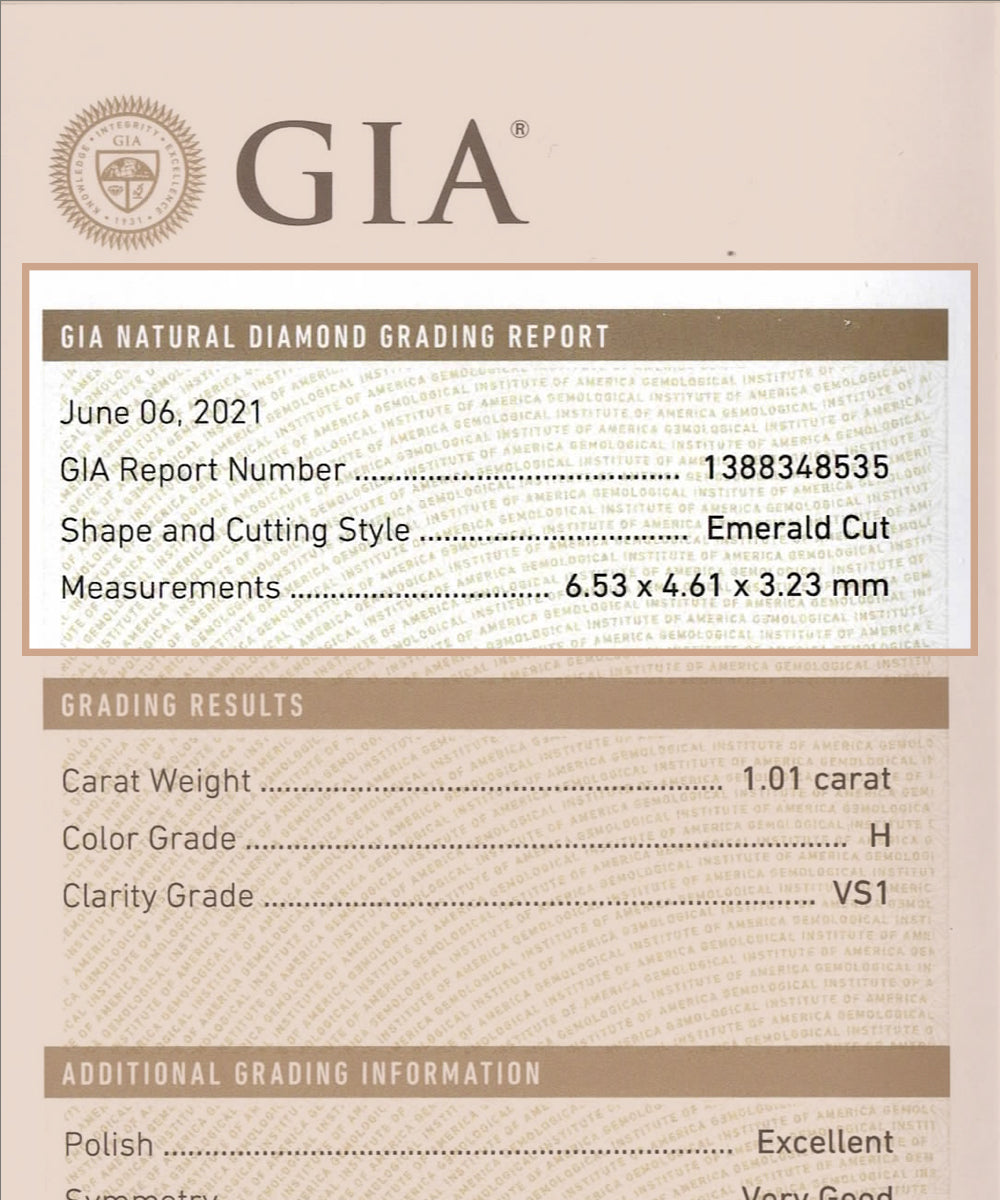
SECTION #2: GRADING
The diamond's grading results are stated here. It will have been assessed on Carat, Colour and Clarity, and if the cut is round then Cut will also feature here.
Learn what each of these grades mean, and the optimum grades for your diamond, below.
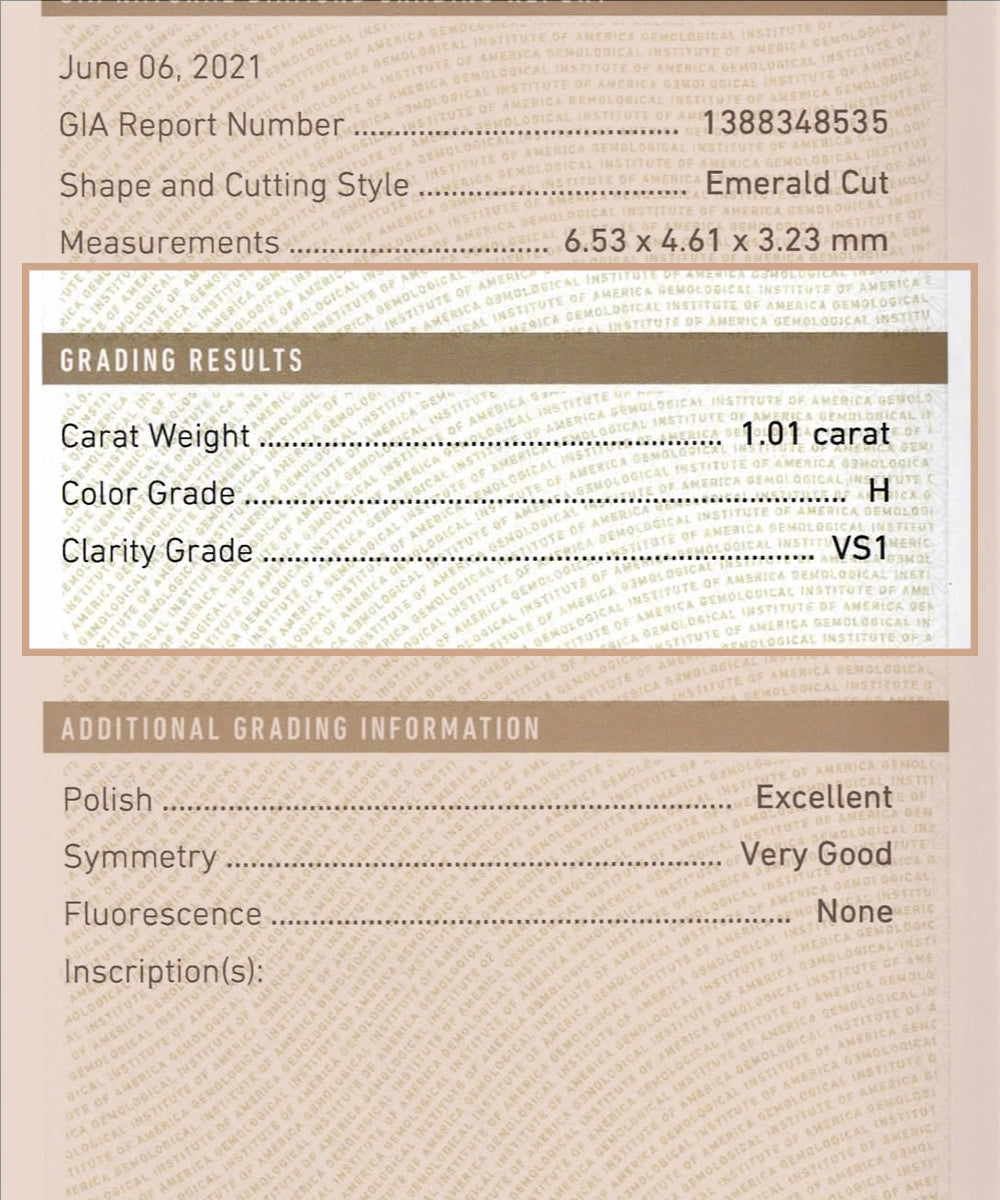
Section #3: ADDITIONAL INFORMATION
Here, identifying characteristics that are not grading factors are assessed. For a fancy cut diamond, these will replace cut as an indicator of the diamond’s craftsmanship.
If the diamond has been inscribed by GIA - an identifying code that links the diamond to the certificate that is not visible to the naked eye - then the number will be detailed in section 3 too.
SECTION #4: PROPORTIONS
This diagram is a graphic representation of the diamond’s proportions. The level of detail captured here depends on the cut of the diamond. A round brilliant cut will have a generous amount of detail for the angle of the pavilion, size of table and depth of the stone.
By contrast, a fancy cut diamond’s proportions will not be as detailed nor will the diagram accurately represent the shape of the diamond.
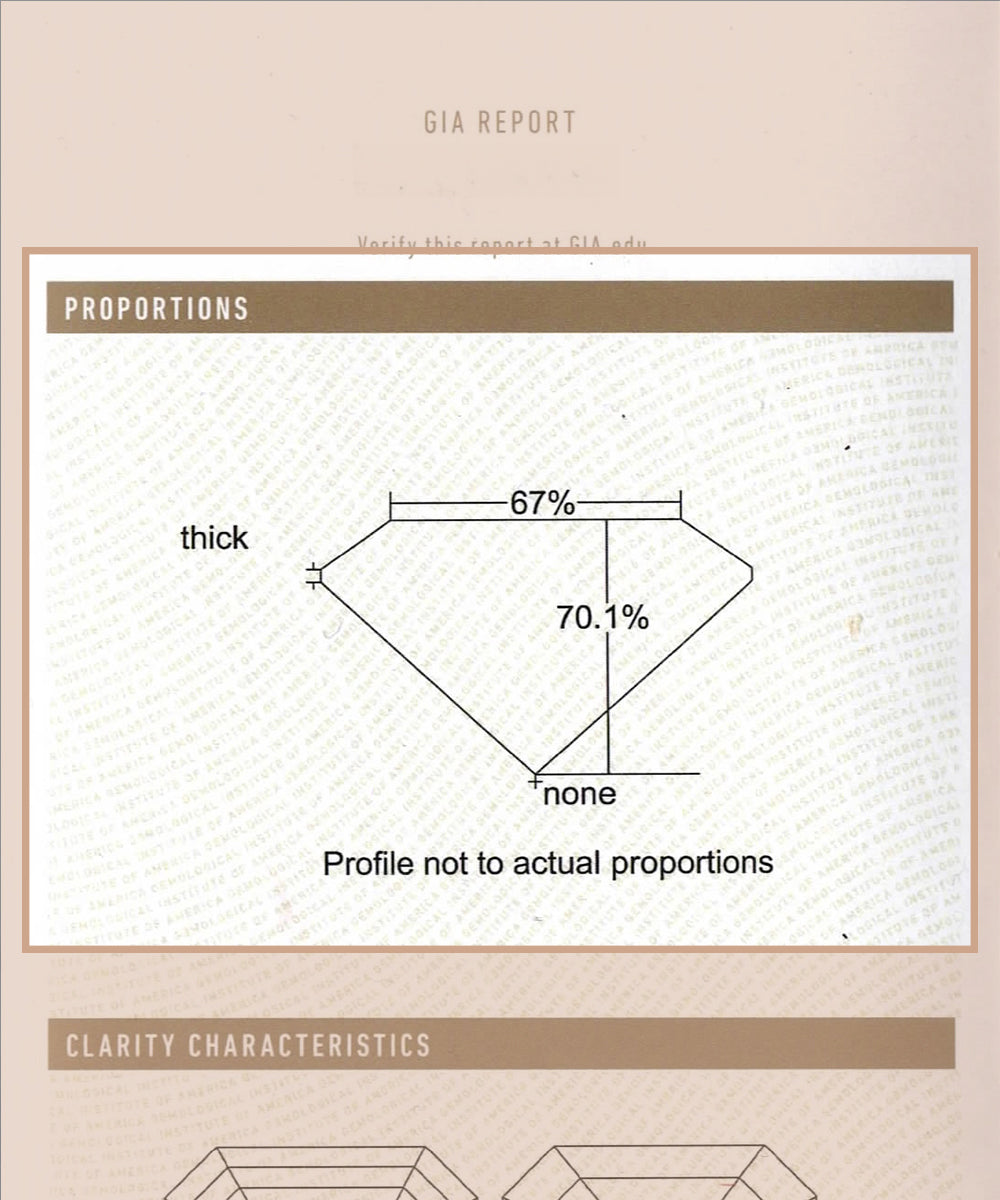
SECTION #5: CLARITY CHARACTERISTICS
This will only be applicable to the full report and not a dossier. Any marks, blemishes, feathers, inclusions, etc, will be marked on a diagram with a key identifying them.
It’s important to remember that while these inclusions are visible at 10x magnification, they may not necessarily be visible to the naked eye and as such the diamond would still be considered ‘eye clean’.
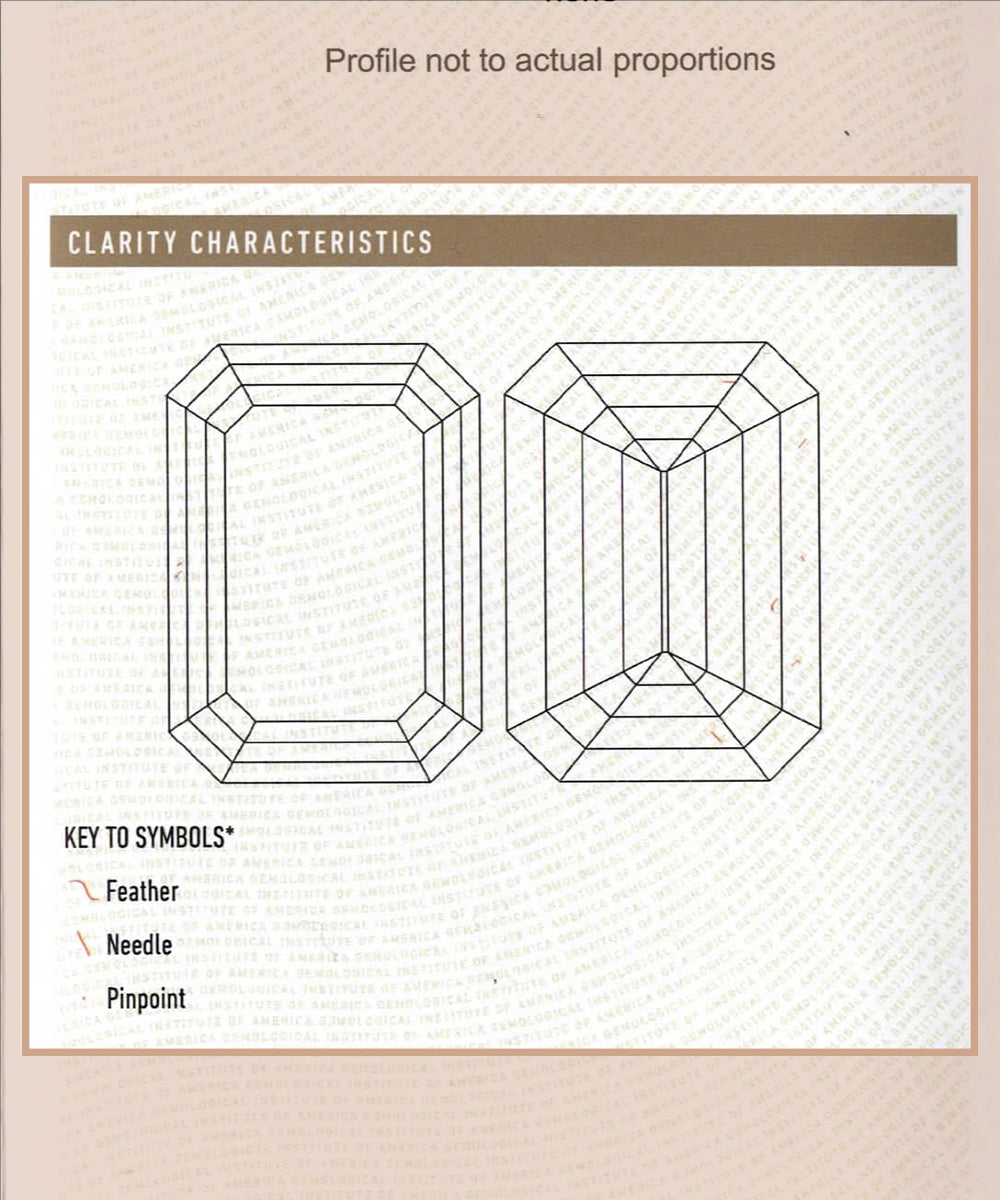
SECTION #6: Key
These scales are added as a key to aid your reading and interpretation of the diamond grading results. They are created by GIA and are the scales upon which your diamond will have been graded.
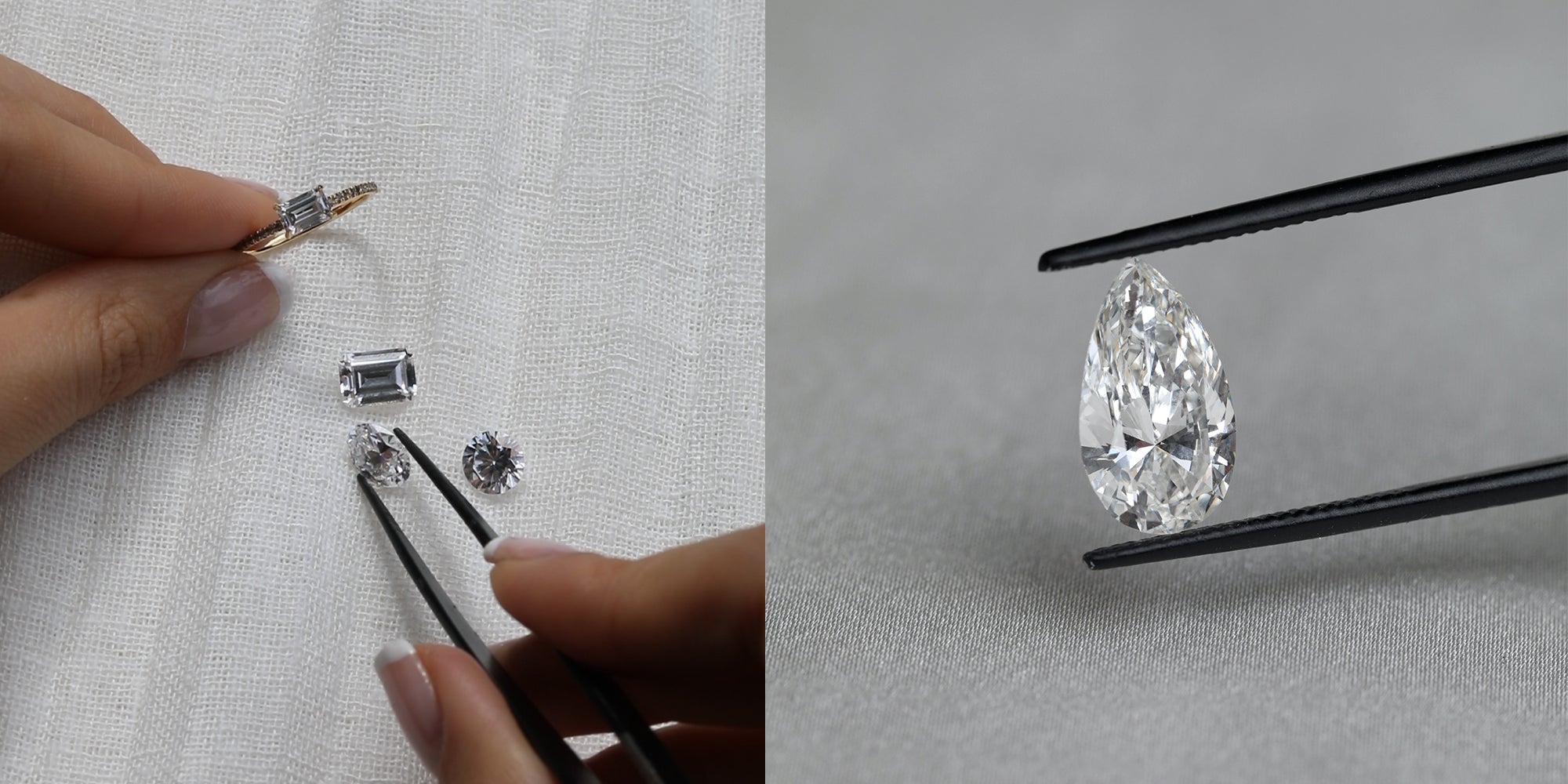
ADVICE FOR CHOOSING YOUR DIAMOND
The report alone does not provide you with enough information to purchase a diamond. Issues like the ‘bow tie effect’ would only be visible from an image of the diamond, so ensure you see a photo or video of the physical stone to accompany the report before purchasing.
If you're unsure, consulting a qualified gemologist, diamond grader or knowledgable gemstone procurer is important to avoid any expensive mistakes.

















